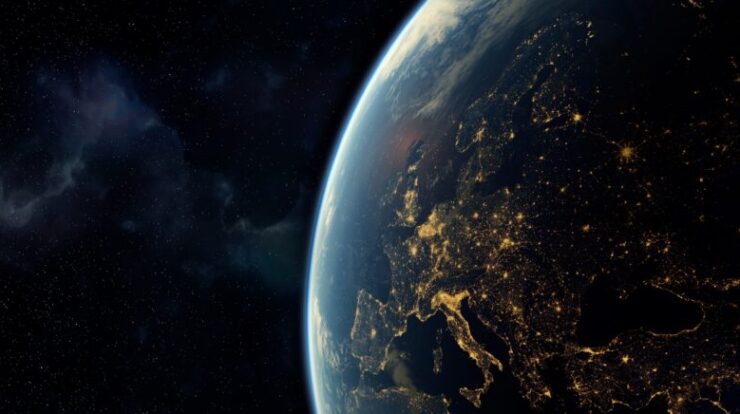
Water is crucial for the existence of life, yet scientists remain uncertain about its origins on Earth. A hypothesis suggests that water arrived here via random impacts from asteroids and meteoroids during Earth’s formative years. These celestial bodies likely brought hydrogen, an element vital for forming water molecules.
Nonetheless, recent studies indicate that Earth originally possessed the necessary components for generating water. The planet likely had sufficient hydrogen reserves to ultimately create the volume of water present on it now.
Scientists in the UK have identified traces of hydrogen sulfide within a specific kind of Antarctic meteorite known as an enstatite chondrite. This rock’s makeup closely mirrors conditions on Earth approximately 4.55 billion years ago.
Scientists believed for a long time that this indicated water must have arrived on Earth through collisions with celestial bodies from the outer solar system; however, these impacts are improbable due to the solar system’s geometric configuration.
A key query for planetary researchers revolves around how Earth ended up with its current appearance. According to James Bryson from the University of Oxford’s Department of Earth Sciences, “We currently believe that the materials which formed our planet—materials we can examine through these scarce meteorites—contained significantly more hydrogen than was initially assumed.”
This discovery backs up the notion that water formation on Earth was a natural occurrence, instead of being due to hydrated asteroids impacting our planet post-formation.
A research conducted in 2020 indicated that enstatite chondrites include hydrogen rather than water. This hydrogen might have combined with oxygen present on Earth to produce water. However, it remained uncertain as to how exactly this hydrogen existed; one possibility suggested is that it could be bonded with sulfur within these space rocks.
The researchers used X-ray absorption near-edge spectroscopy to look for signs of hydrogen attached to sulfur inside an enstatite chondrite found in Antarctica in 2012. They found more hydrogen than expected. It was in the form of hydrogen sulfide.
“We were incredibly excited when the analysis told us the sample contained hydrogen sulfide-just not where we expected,” said Tom Barrett, the lead author of the study and a scientist from the University of Oxford’s Department of Earth Sciences.
Subscribe to Chip Chick’s mailing list to receive tales like this directly in your mailbox.
Given the minimal probability of this hydrogen sulfide stemming from earthly pollution, this study offers crucial proof backing the notion that Earth’s water is indigenous—resulting naturally from the composition of our planet itself.
The abundance of hydrogen indicates that Earth could have contained hydrogen since its formation. Rocky planets in the inner solar system might develop with the hydrogen that is required to create water oceans, meaning that habitable conditions could be more likely than previously thought.
Some scientists still aren’t convinced, though. Enstatite chondrites could be contaminated from water already on Earth.
The extra hydrogen may have come from the Antarctic ice and meltwater surrounding the meteorite before its discovery.
The new study was published in the journal
Icarus
.
More from Chip Chick
A Borean Orangutan Named Ken Became Known As Hairy Houdini After He Escaped From His Enclosure At The San Diego Zoo Multiple Times
Growing proof indicating that various animals possess more intricate conscious thoughts than previously thought has prompted researchers to sign the New York Declaration on Animal Consciousness.
She’s Devastated Because Her Partner Has Been Messaging Their Ex-Wife Expressing Nostalgia






